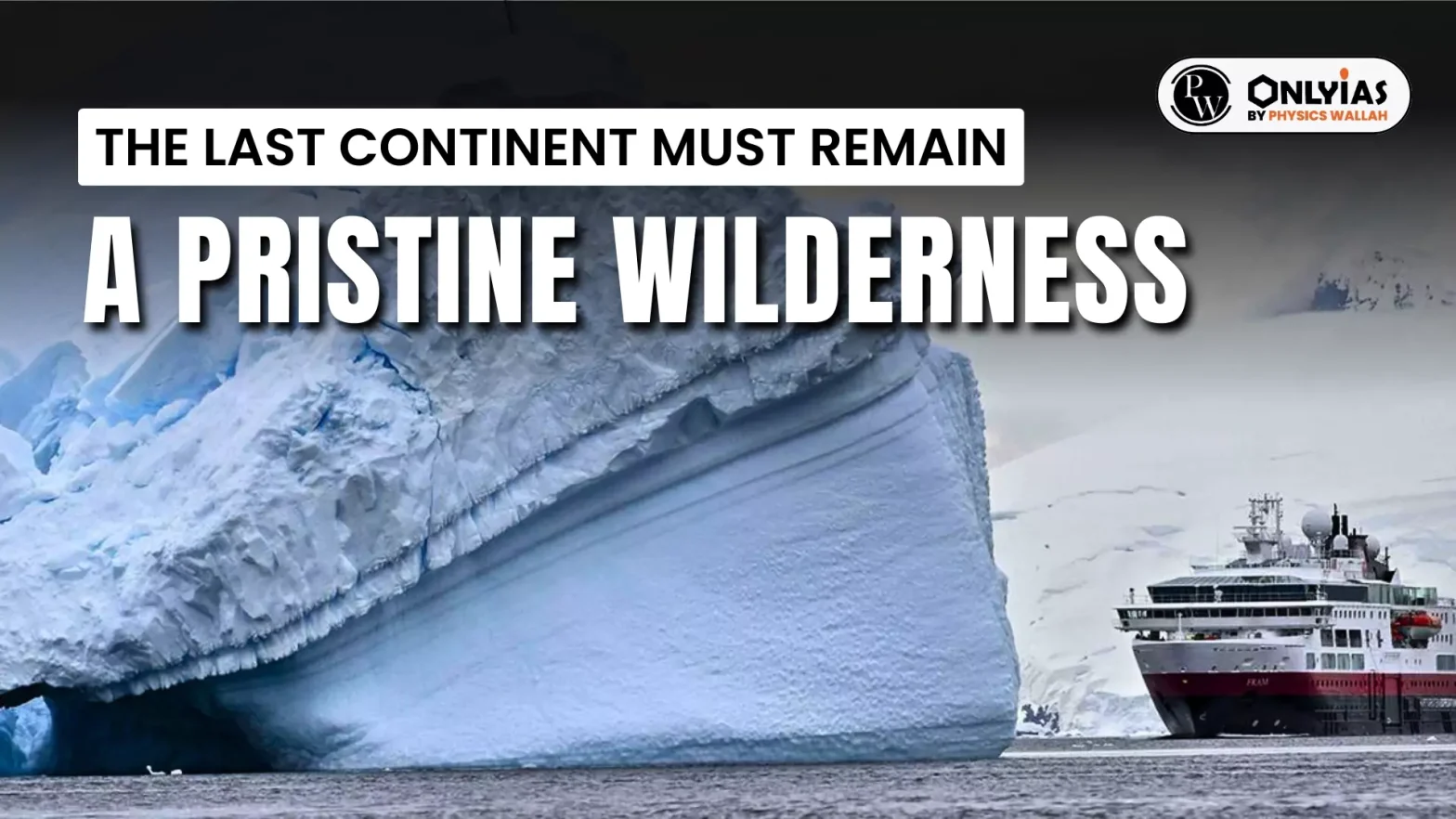The 46th Antarctic Treaty Consultative Meeting (ATCM-46), that was held in Kochi, Kerala last month, highlighted the ongoing debate on Antarctic tourism.
Last Continent must remain a Pristine Wilderness
While the meeting sought to bring in a regulatory framework, it ultimately fell short of a definitive solution. This reflects the complex challenges of managing tourism in a region governed by international consensus and where the environment is rapidly changing. Since the early 1990s, Antarctic tourism has witnessed a dramatic surge in tourist numbers, which have exploded from a few thousand to over 1,00,000 in the 2022-23 season.
Enroll now for UPSC Online Course
- The International Association of Antarctica Tour Operators (IAATO) estimates a figure of 1,18,089 tourists in 2023-2024.
- The United States and China account for more than 40% of tourists to the Antarctic.
- This growth is attributed to increased global interest in adventure travel and a desire to experience Antarctica’s unique landscapes and wildlife.
- Tourists typically embark on multi-day expeditions on small to medium-sized ships, with some opting for larger cruises or fly-sail operations.
- Activities range from wildlife observation and photography to mountain climbing and skiing.
- Antarctic tourism offers educational and economic benefits but also raises significant environmental concerns.
- Increased human presence disrupts wildlife, damages fragile ecosystems, and risks introducing invasive species.
- Ship traffic pollutes pristine waters, and tourism adds to the global carbon footprint.
- Climate change exacerbates these issues by opening new areas for tourism while increasing ecosystem vulnerability.
- The balance between scientific research, responsible tourism, and environmental protection is under intense pressure.
Gaps in the Regulatory Framework
- The current governance framework for Antarctic tourism is fragmented and lacks clear regulations.
- The Antarctic Treaty, that came into force in 1961, prioritises peaceful use and scientific research.
- While the Madrid Protocol offers broad environmental guidelines, it lacks specific tourism regulations.
- The responsibility for day-to-day management falls largely on the IAATO, a self-regulatory industry body.
- Many believe IAATO’s guidelines are inadequate to address the growing environmental pressures.
- The ATCM is the primary platform for international cooperation on Antarctic issues.
- Despite recognising the need for a comprehensive tourism regulatory framework, the ATCM-46 failed to reach a consensus.
- Unanimous agreement from all consultative parties is required for decisions, often slowing action and allowing national interests to impede progress.
- While some countries push for strong regulations, others prioritise economic benefits or interpret Antarctic principles differently.
- The current geopolitical climate further complicates international cooperation on Antarctic governance.
Despite the limitations, the ATCM-46 made some progress.
The meeting focused on developing a “comprehensive, flexible, and dynamic” framework for regulating tourism and non- governmental activities.
- A newly established working group will lead this effort over the next year. This signifies a renewed commitment to address the challenges of the Antarctic.
- Antarctica needs stronger measures to mitigate tourism impacts, as there are gaps in the current governance frameworks.
- The Antarctic Treaty System and the Madrid Protocol offer broad guidelines, but daily management relies heavily on self-regulation by IAATO, which many believe is inadequate for protecting wildlife and ecosystems.
- A historical perspective on the evolution of discussions around tourism regulation is also valuable.
- Discussions on tourism regulation have been a point of debate at ATCM meetings since the 1960s.
- A proposed tourism annex introduced in 1991 failed to gain consensus, leading to the current reliance on IAATO’s self-regulation.
Check Out UPSC NCERT Textbooks From PW Store
Conclusion
Antarctica’s growing tourism demands stronger regulatory measures to protect its fragile environment, requiring comprehensive international cooperation and stringent oversight beyond IAATO’s self-regulation.
![]() 18 Jun 2024
18 Jun 2024

